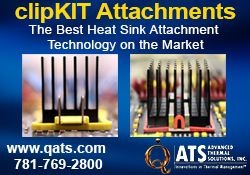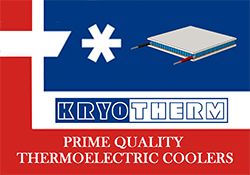coolingZONE (CZ) and Aavid’s Dr. Sukhvinder Kang (Dr. Kang) sat down to talk about Aavid’s worldwide network of thermal analysis laboratories Aavid has labs in the US, Italy, China, Taiwan, and India and each one plays an important role in bringing to their customers the capability to test a heat transfer solution. coolingZONE has talked before about thermal analysis labs of course, most notably in our blog post, “How to Set Up a Lab for Electronics Cooling Thermal Engineering“. But what if such an undertaking is beyond a design teams means or core design mission or funding? Let’s cut to our interview with Dr. Kang to learn more:
CZ: How did you set up your lab? Was it based on some experience you had with a big OEM or based on customers asking for certain kinds of testing?
Dr. Kang: Well, our labs evolved based on two needs. One is helping our customers since we do service critical customers and the second is for our own internal R&D for products. Those products address both current needs and future challenges so our lab needs to be current and well maintained in order to meet the current and future trends in the industry.
CZ: So those two areas really drove your choices of the lab and the equipment in the lab as well?
Dr. Kang: Yes, so we can test things like air cooling, board level cooling, liquid cold plates, heat pipes, various heat sinks and more. Also, as you well know, over time, the thermal resistance numbers engineers are targeting have become smaller and smaller and have driven more precision thermometry, better controls, and more active air flow and pressure drop measurement. The industry has become much more demanding and the cooling products have become much more capable. Indeed, we didn’t expect in the 1990’s that we could do the kinds of things we can do today with air cooling but we are.
 Aavid Thermalloy Test Setup
Aavid Thermalloy Test Setup
CZ: Why and how did you choose the particular kind of lab equipment that you have?
Dr. Kang: Just about everything in our lab is custom designed for our needs and I’d expect that would be true for most thermal labs. There is a need for data quality, precision, control of test conditions, and automation. Every test we do is automated. Of course items like sensors, data loggers, pumps and so on are off the shelf and selected for the range of flow rates, pressures, temperatures or sampling speed at which we want to acquire data. So these items are chosen and configured for our needs.
And this mix of customization and off the shelf products is necessary because we have different labs around the world: Taiwan, China, Italy, India, and two in the United States. And they all started in response to very unique needs. The time, place and requirements were all different for each. Each lab’s equipment is somewhat unique to each lab given certain geographic needs. There are some common pieces like data acquisition, file systems, the way the data is managed and stored so that it facilitates collaboration between labs.
But wind tunnels, or flow benches as I prefer to call them, are just a means to generate the flow and to meter it, plus a duct where you can put your test set up in the flow. We designed and fabricated custom ones for our lab in Concord, NH. For our Taiwan lab we purchased one from LongWin they make very good equipment. In Italy we custom designed a large wind tunnel for testing high power products and had it built to our specs. For our China lab we designed and manufactured a custom wind tunnel and in 2013 we will add another one like our large wind tunnel in Italy. In California we have a commercial unit we purchased.
And then over time we’ve extended our labs’ capabilities by adding liquid flow capability, heat pipe testing and dual phase testing. We develop our own specialized heat sources, thermal test vehicles, which include the thermometry right in the device. We have a record of the data we’ve collected from our TTV designs over time and can further improve the equipment.
 Aavid Thermalloy Test Setup
Aavid Thermalloy Test Setup
CZ: Are there any particular protocols that Aavid uses in their lab that allows for accurate testing and analysis?
Dr. Kang: We have an Aavid formal Test Request or TR Form. Every test in the lab has to have a TR attached to it. The TR is a means for the engineer who is requesting the test to specify as accurately as he knows, the specific test parameters and test setup. This could include the orientation of the device being tested, the flow rate, power levels and any other attribute an engineer can specify ahead of time. We are flexible in our test parameters, so in the case of a heat pipe, we can test in a wide range of orientations given the often unique shapes and bends they have. We quantify the variables that affect performance. We test permeability and capillary pressure in the pipes and a variety of other tests. An engineer can specify a wide range of test variables. Then the technician who is executing the test, they execute the TR based on very standard and uniform procedures that Aavid rigidly enforces. Each test has a wide range of flexible parameters but the execution is done in a standard way to build in a consistent test method and data collection. We want it to be easily replicatable across our lab network as necessary.
Aavid also has at every major lab one or more “golden samples” for all the standard tests. This allows Aavid to periodically test whether the instruments have become uncalibrated. We put the same part on 6-months later and we want to see a data point that is within +/-2% or 3% of the original measurement. If we don’t see that, we know that something has changed in the instrument. For example, in a flow bench a common thing is that someone forgot to close all the leaks based on the last test setup. Also we calibrate our instruments once a year and everything is traceable so none of the instruments are out of calibration when they are in use.
CZ: Let me ask you about cold plates and heat pipes. That’s really the interim step that engineers may choose when they can’t get the thermal performance they need out of air. In the context of testing in your labs, do you find your customer’s looking for test capability for cold plates and heat pipes?
Dr. Kang: Well, we are manufacturing a huge number of products that incorporate heat pipes. The thing about heat pipes is that no two heat pipes are the same. Each is unique. As part of the design process for our heat pipes, we test the heat pipes and the heat sink assemblies, we do a statistical distribution of the performance you can expect, the minimum performance you can expect in the heat pipe etc. We are particularly sensitive to include information on how much power the heat pipe can carry. In every application it has to be able to carry “x” number of watts. And you have to insure it will carry this wattage otherwise you will have local dry out or certainly excess temperature beyond an application’s specification.
With liquid cooling, we have engineered and manufactured a wide variety of cold plates. Beginning with very simple tube type cold plates. Our customers’ want data on even these simple cold plates, such as performance at different GPM and with different fluid types. Our labs are setup to do that. Our work doesn’t stop with simple cold plates though; it also includes different internal structures, fins, channels, micro-channels and more. Regardless of how simple or complex, the data is very important.
A customer’s application needs a certain thermal resistance or some characteristics and we need to demonstrate and deliver that. When you have a heat sink like an extrusion, which is a stable quantity of aluminum, once you have geometry you are done. Unless you change something like an alloy, add heat pipes, or make a heat sink with soldered joints, which then becomes part of the thermal path, then the quality control requires more diligence, including performance testing. Designers and manufacturers must be able to verify the product meets the specification for the application. In our process, we test 100% of the early stage products coming out of our factories. Our testing in these cases isn’t factory floor testing but full testing in our thermal R&D labs. The test process we have insures the design is stable and meets the thermal requirements of the application. We’ll test the first few lots in this way. In some cases where volume of production or technology really requires it, we’ll develop a custom test process and equipment set up right in the production factory itself. That way our teams in the factory can collect data to insure specification compliance.

Aavid Thermalloy Test Setup
CZ: Did you find that as a global company that you needed to set up a global network of labs for that purpose, to meet your customer’s requirements in their different geographies, or did you do that in order to spread out the investment in labs across all the geographies?
Dr. Kang: Our lab investment strategy is really to put labs in geographies that best support local companies, global companies and Aavid manufacturing around the world. So we have multiple goals we try to meet.
CZ: Is it relatively easy for a company to do their initial developmental and prototype work at a local manufacturing company, thermally characterize it at an Aavid local lab, then transfer that test methodology accurately to a high volume location? Are the protocols transferrable giving customers the ability to prototype locally and once a product is stable ship it to high volume?
Dr. Kang: Absolutely and this is a very common request. Most of the time Aavid is part of the customer’s engineering team on the thermal system development. Our job in some of these cases is to provide design for manufacturability input but many times it is helping to define system architecture and consider carefully what kind of thermal management design can be applied, within the constraints of the overall system design. And then there are other projects where a customer has designed a heat sink or other thermal management solution and they need our expertise to validate its function. Different customers have different levels of requirements. Some understand such thermal characterization is valuable but they don’t have a budget for it while other firms understand it and have money and people set aside to do it.
CZ: You bring up an interesting point about your laboratories and this whole point that some firms may not understand the value of doing thermal characterization even though they might acknowledge it as necessary. Is that something you’ve seen in your work?
Dr. Kang: The firms that come to us from a design services perspective always understand that they’ve got a problem. For them, having data that proves the solution we will deliver actually solves the original problem and is very important. The further verification that the prototype solution works in production is always seen by these types of firms as vital to their product’s success. With other firms there is more of a bi-directional education as to why thermal characterization and testing is important. Our team gets educated on the cost, performance and timeline goals the customer has which are critical for us having a successful joint development. On occasion, we have to educate the customer on why certain design approaches or tests matter. We have to show them why they may need to change their development schedule slightly to accommodate their particular thermal solution. The ultimate goal of this of course is to have the right thermal management solution for the application which leads to a successful product design.
CZ: What did Aavid do right in setting up their labs and what would Aavid do differently if you had to set up your labs from scratch again?
Dr. Kang: Well, let me start with what we did right. The way I can answer that question is that our labs are very effective for the types of tests we conduct and they are very flexible for research and to find the answers to a wide variety of engineering questions. Sometimes questions we are researching do stretch the limits of our or any labs capability and we have to tap into our University network. For companies that develop commercial or even military products, our labs are very capable. In addition, we keep our equipment updated. Over the past 12 years we’ve replaced or upgraded most of the equipment in our worldwide lab network, and that cycle of keeping our labs up to date and refreshed regularly continues. What we did right was to stay current, was to keep up with market and customer needs.
What we didn’t anticipate is the quantity of testing required by customers. Customers want design partners and for Aavid to be a good partner we have to keep verified “golden sample” parts, custom fixtures and certain specialized test apparatus that all makes a difference to a customer. But that takes physical space and here in hind-sight I’d have allotted more space to our labs layout.
CZ: Dr. Kang, many thanks to you and Aavid for speaking with us today. As we reach the end of our interview, what have been the most interesting projects your team has worked on? Have you ever had to do thermal testing of a chicken coop?
Dr. Kang: Well, no chicken coops! And unfortunately I can’t share any specific projects due to the proprietary nature of them. However I can say we’ve done a huge number of projects over the years. One in particular involved PC’s that were fanless, cooled only by natural convection, and that was a multi-year project. Our role was not just in testing and thermal characterization but in the overall system architecture since air flow was vital to system cooling. The biggest challenge in the design was the display tube, this was before LED. The volume of space taken up by the display tube posed a challenge to the airflow. So our work in specifying how the electronics were laid out, how the chassis was mechanically fashioned, and the x, y, and z dimensions of the populated PCB were all critical factors in our successfully executing this project. We’ve worked on telecommunications switches and routers and early 1U servers where the size made electronics cooling pretty tough. 1U designs today are better overall at dealing with thermal management requirements. We have also done very interesting projects on very high end liquid cooling systems, both single phase and dual phase. We’ve even done a project involving sonic nozzles to manage airflow. The result of all this work is our teams have a very wide range of experience across a variety of technologies. This kind of experience gives Aavid the kind of depth and breadth of capability that makes us a valuable partner to firms who might not be able to invest in a thermal lab and the personnel to use it most effectively. In some sense our labs with our teams are a toolbox and we use heat transfer and fluid dynamics principles to solve many different kinds of thermal management problems. These aren’t just off the shelf solutions but the application of heat transfer fundamentals to bring solutions to bear and that is very powerful. And that is the strength of Aavid’s thermal labs



